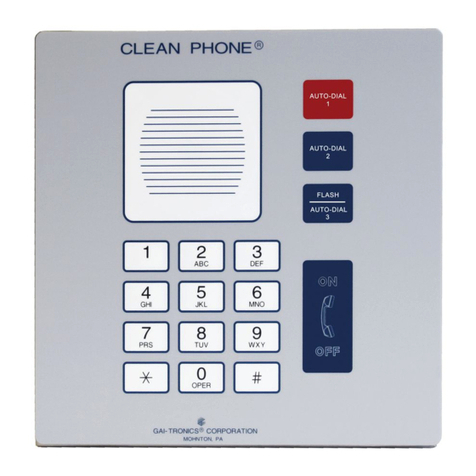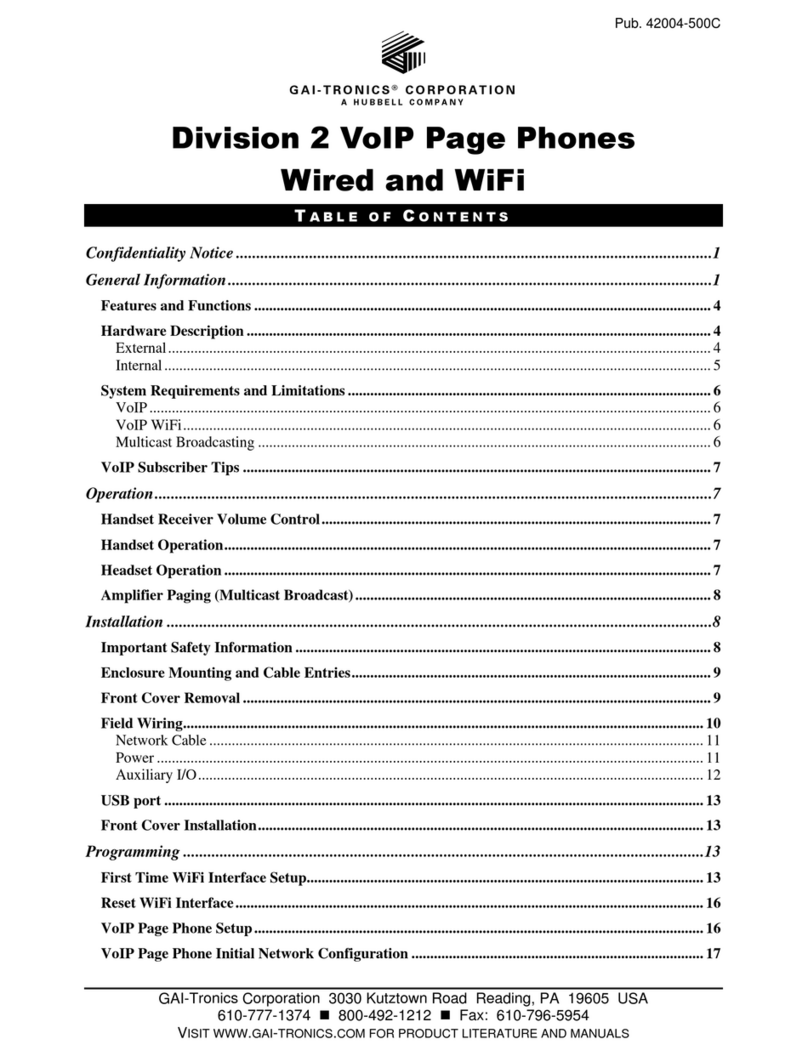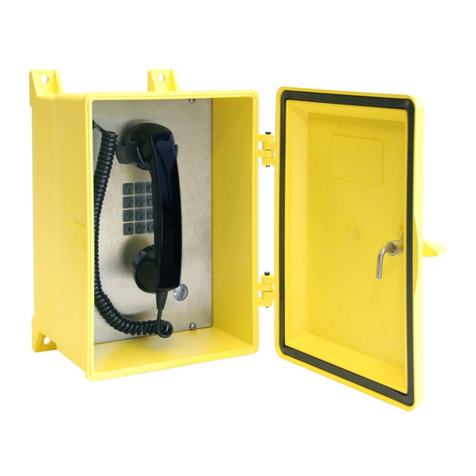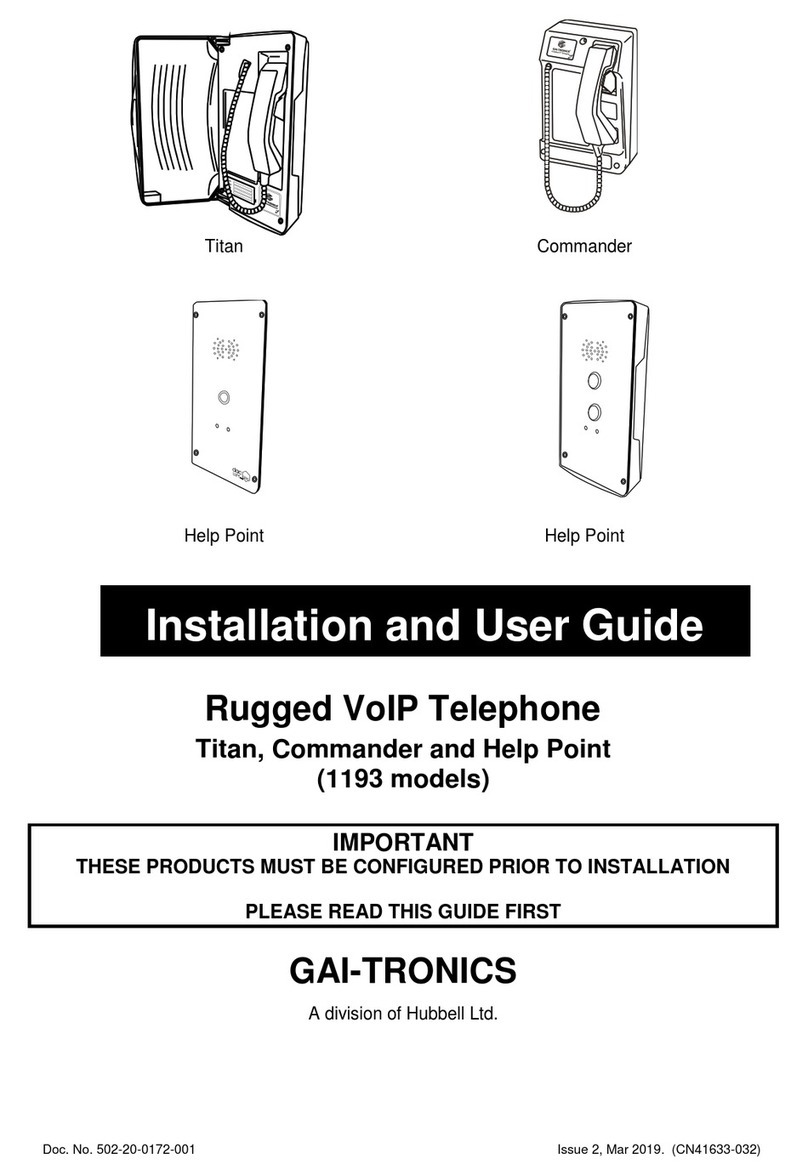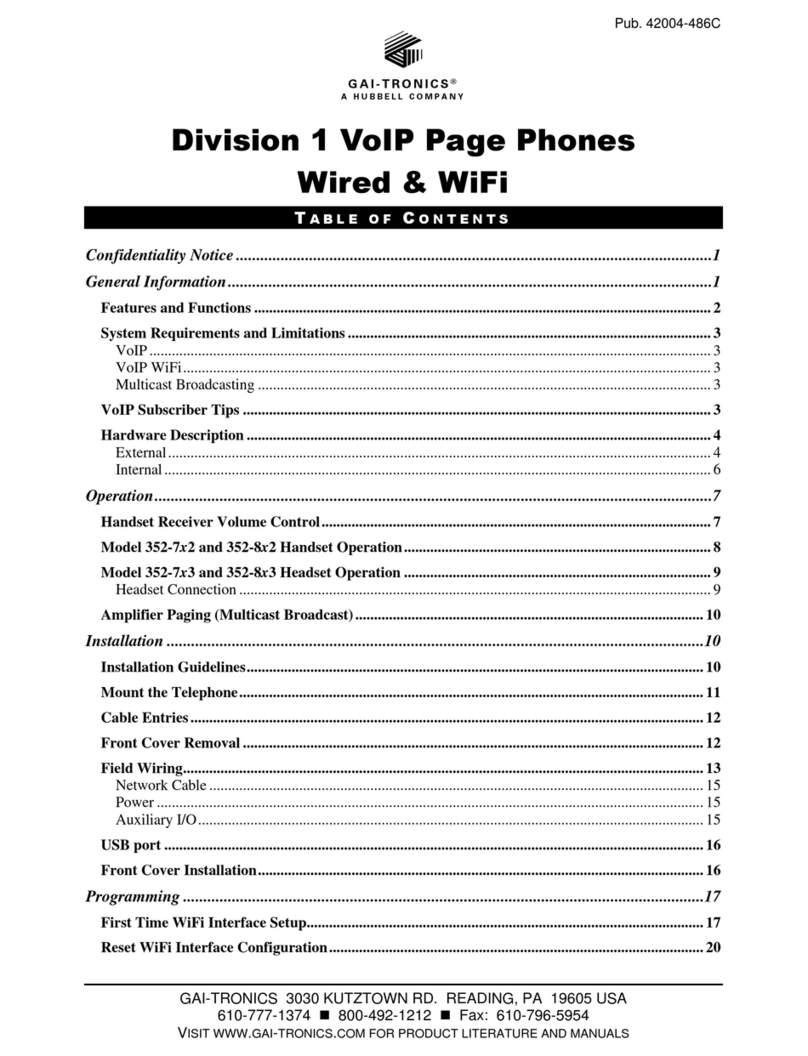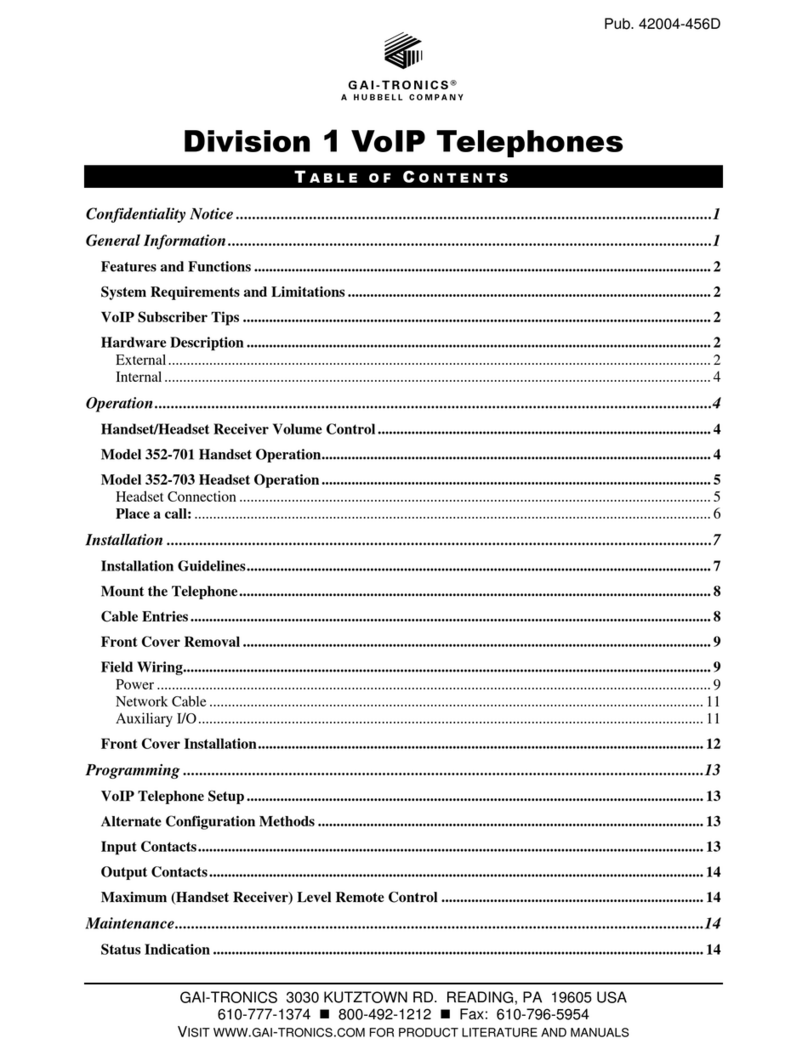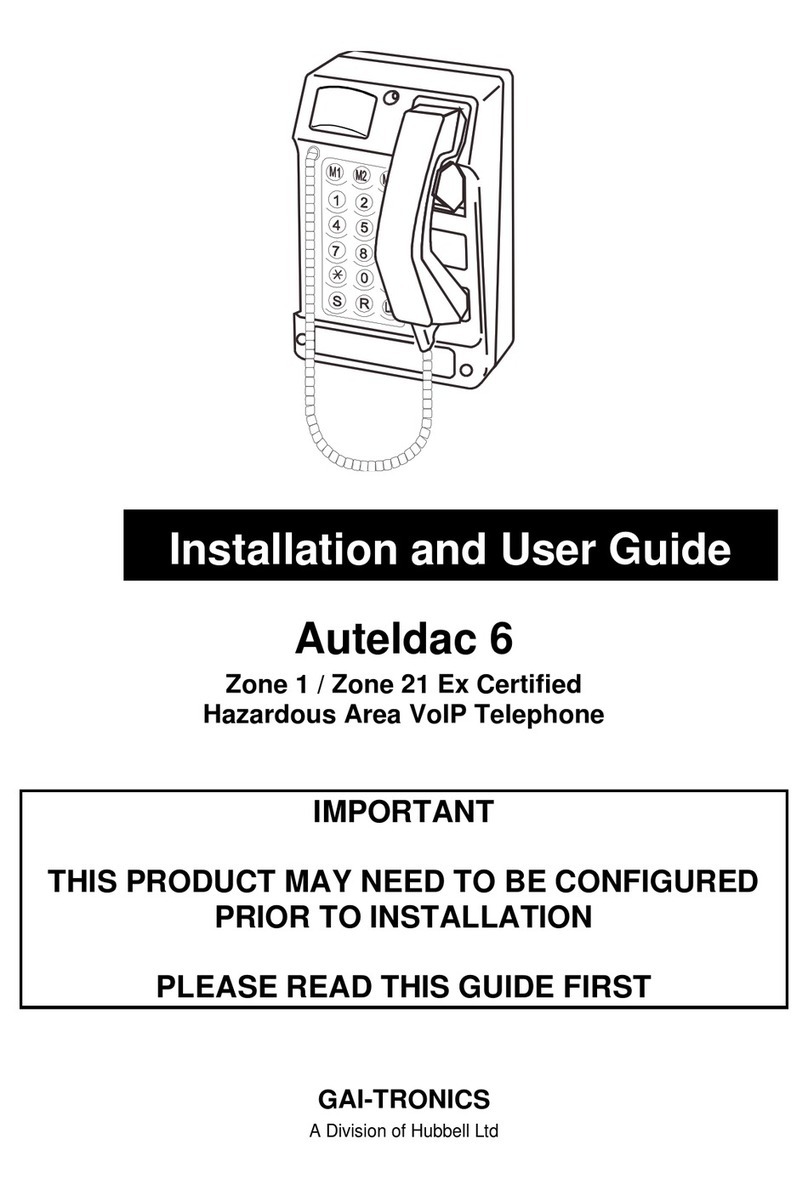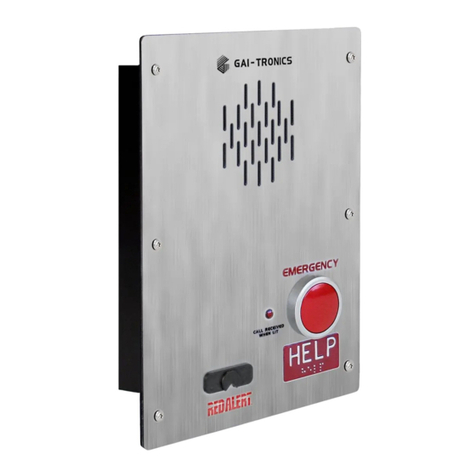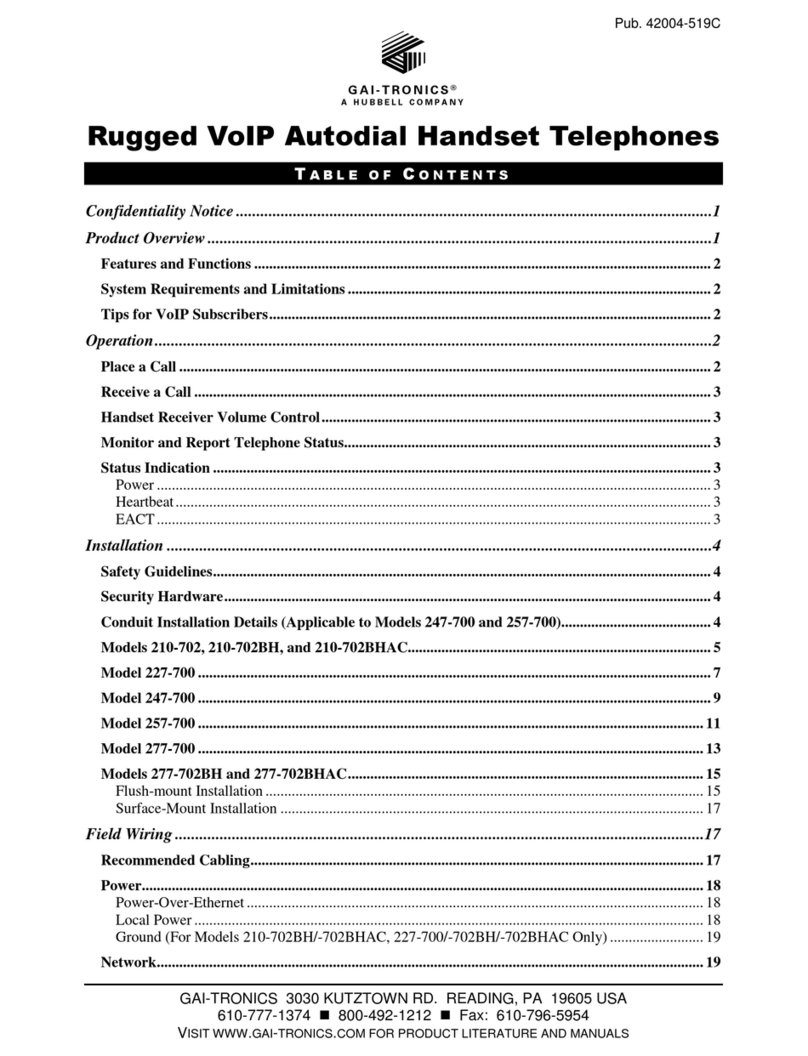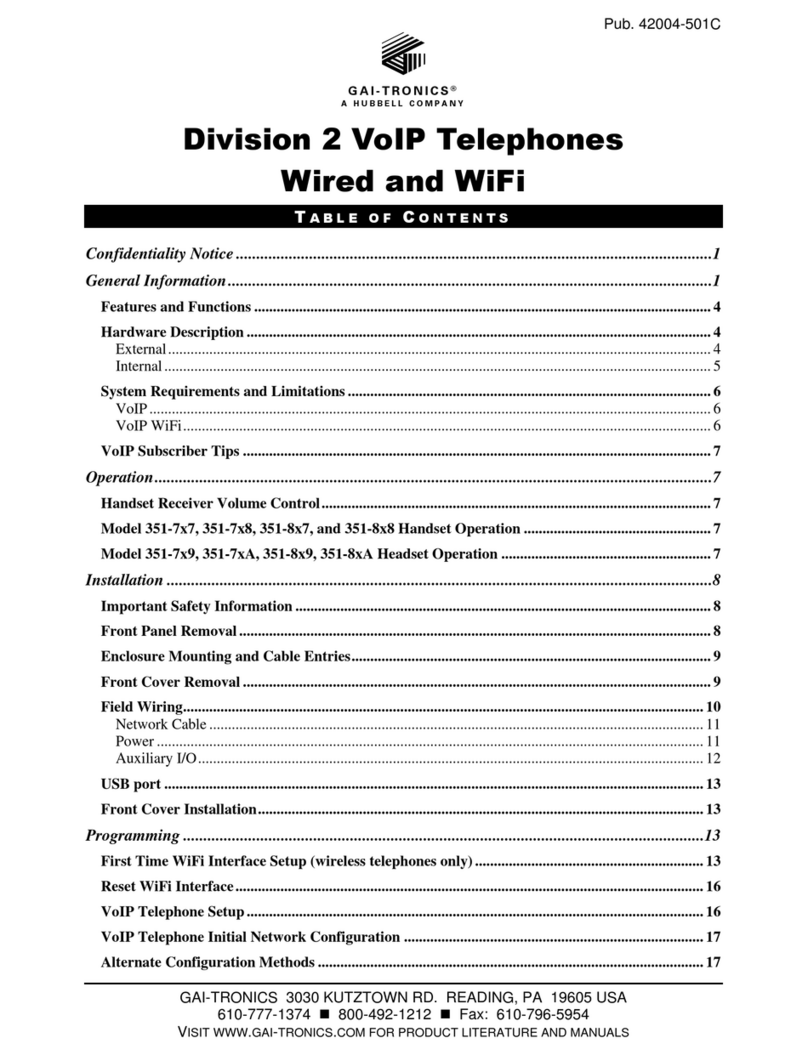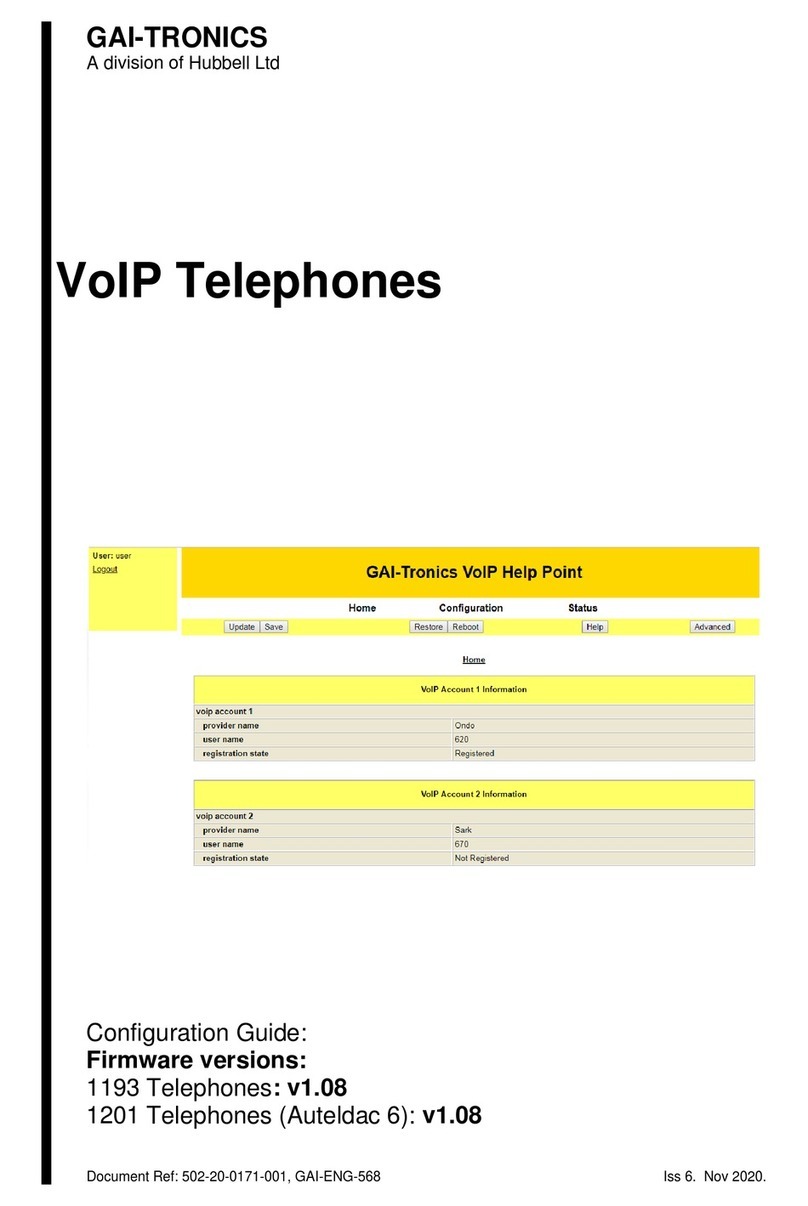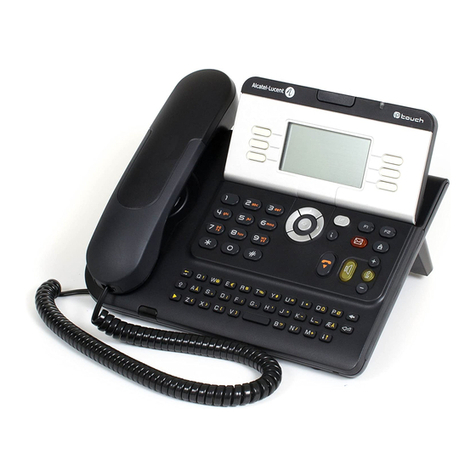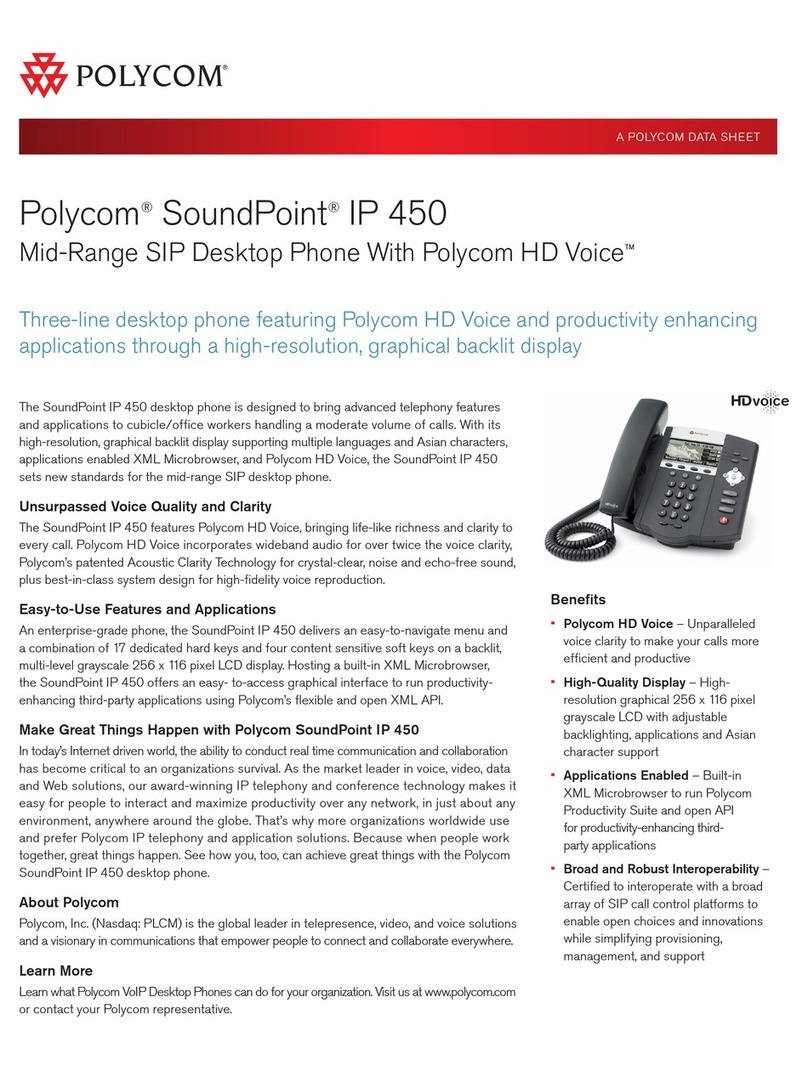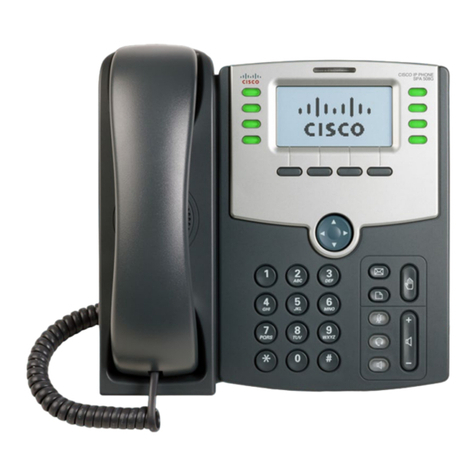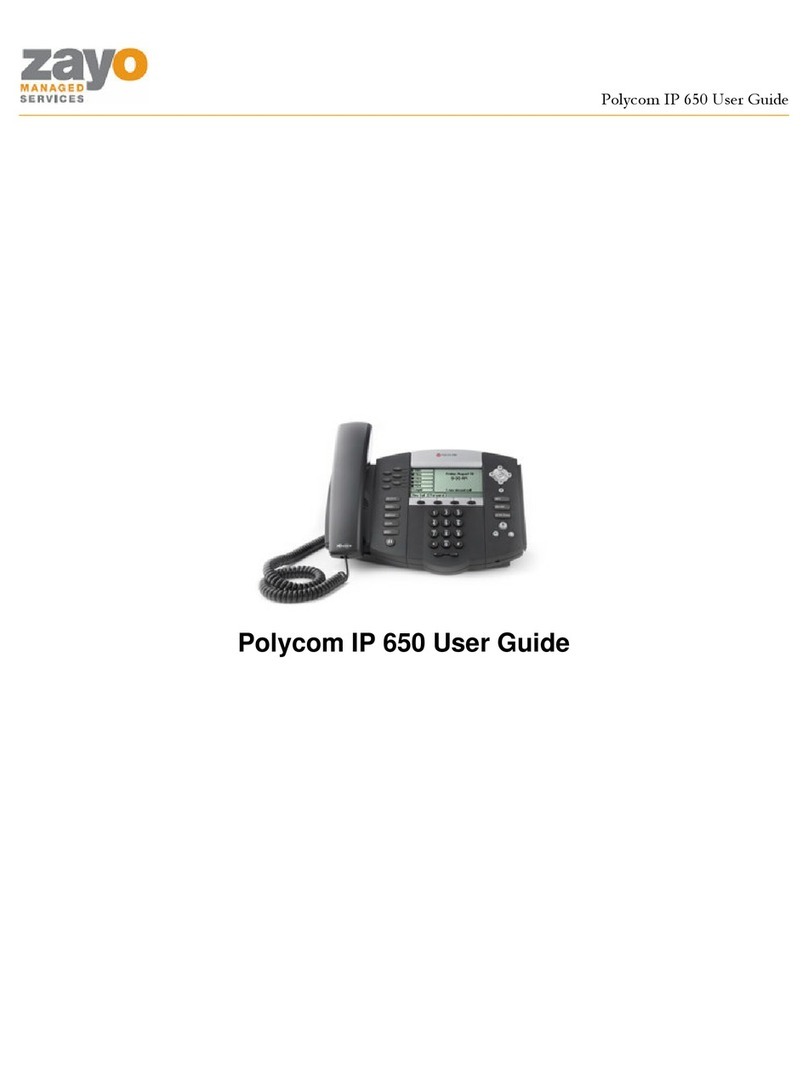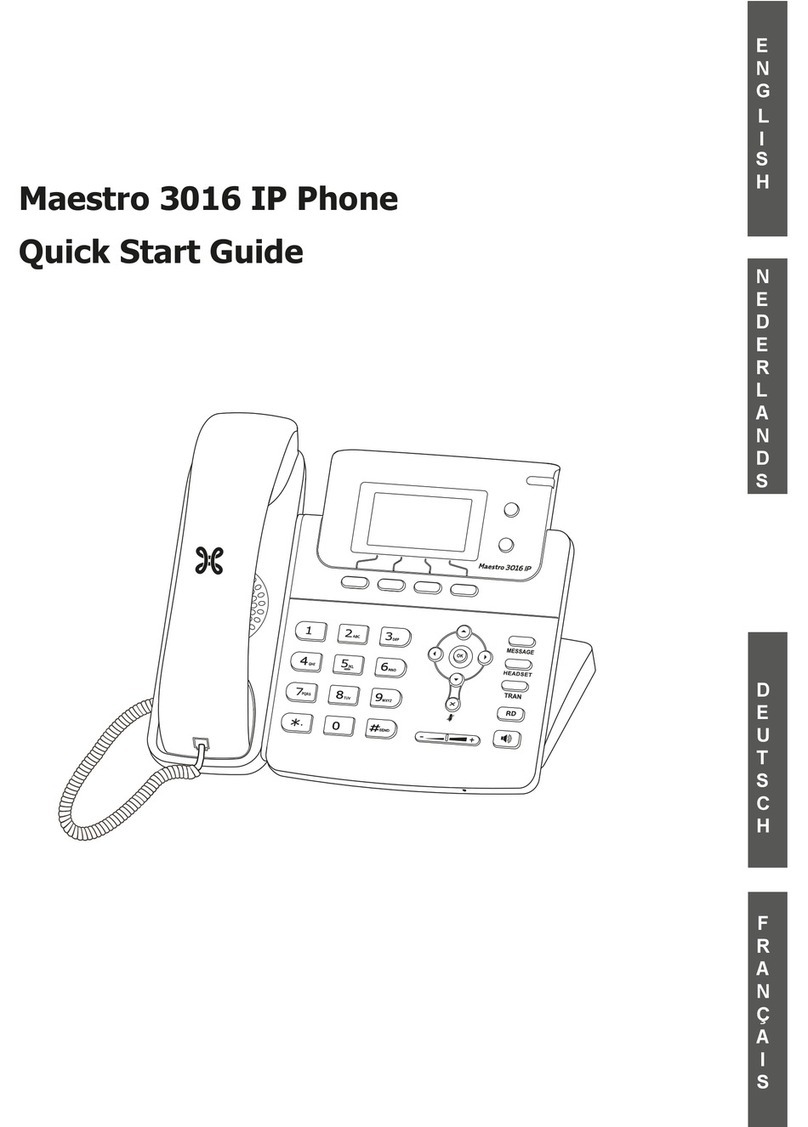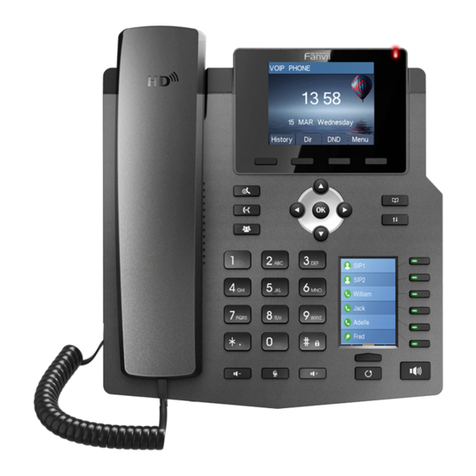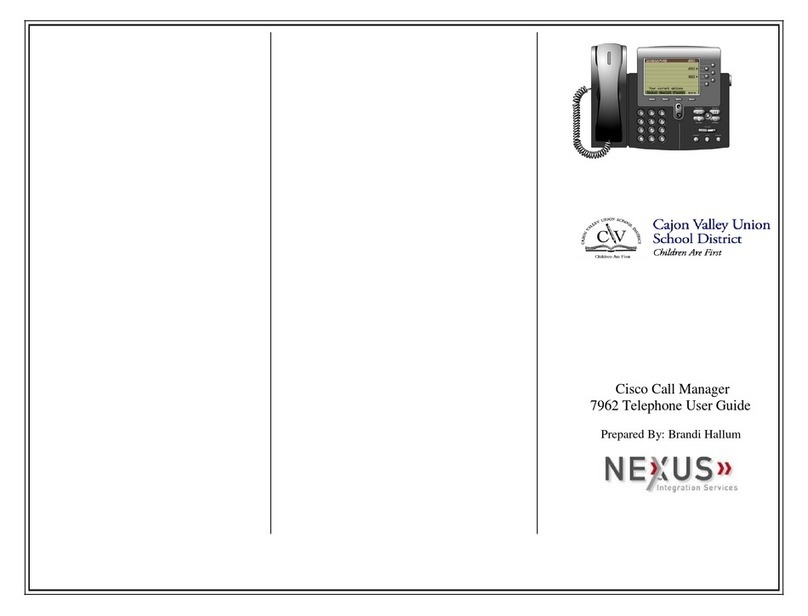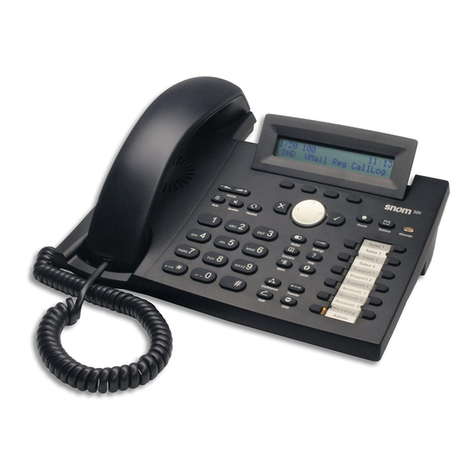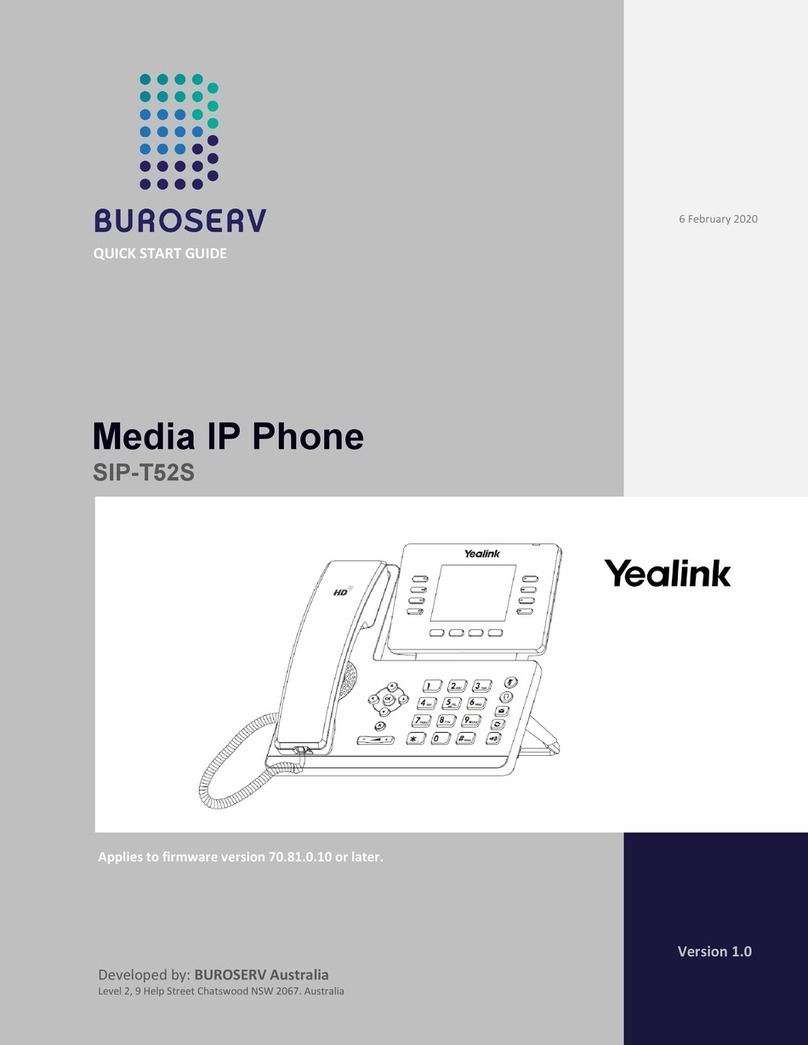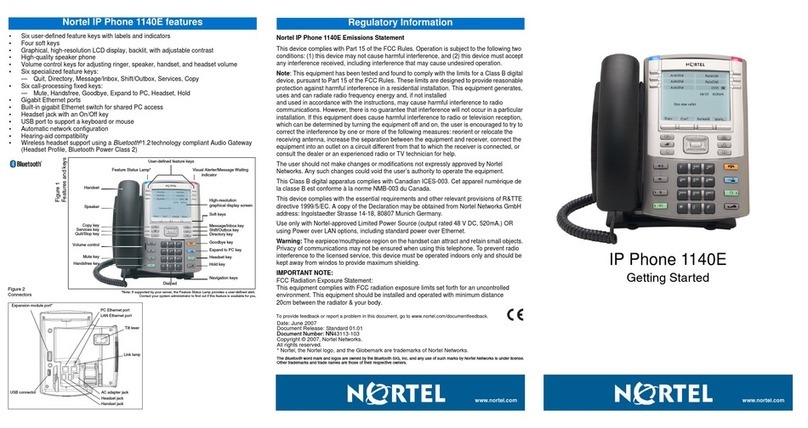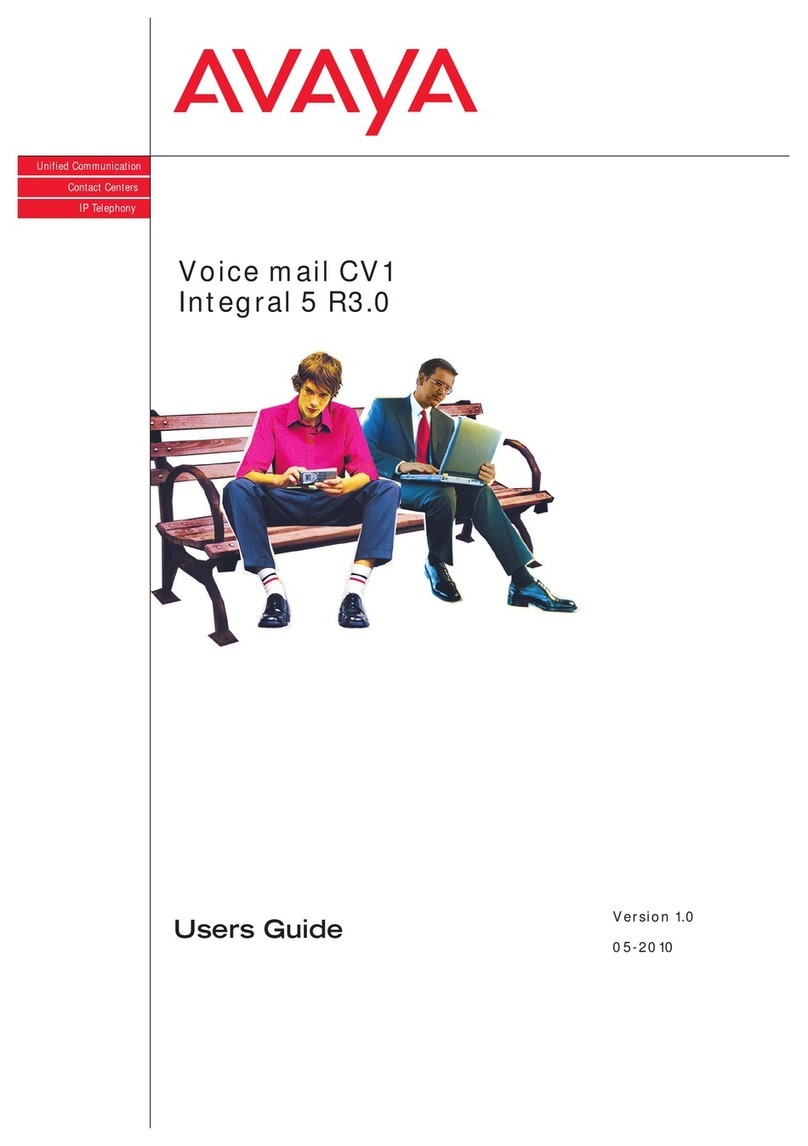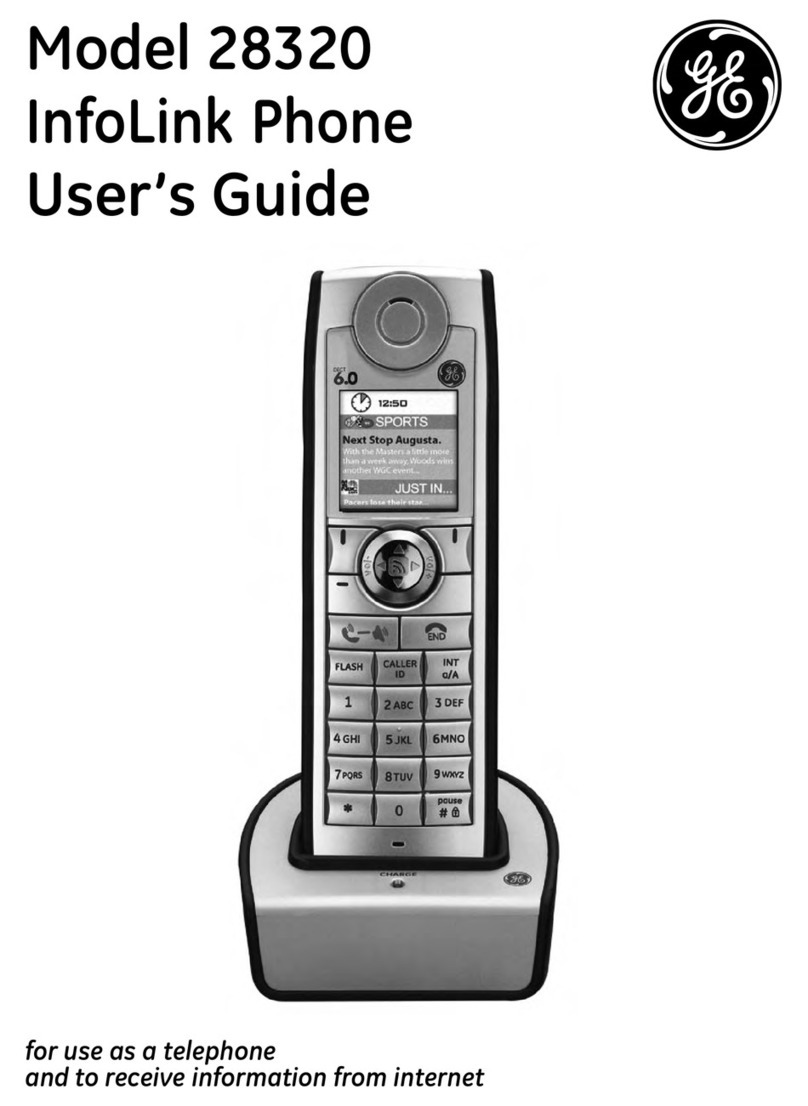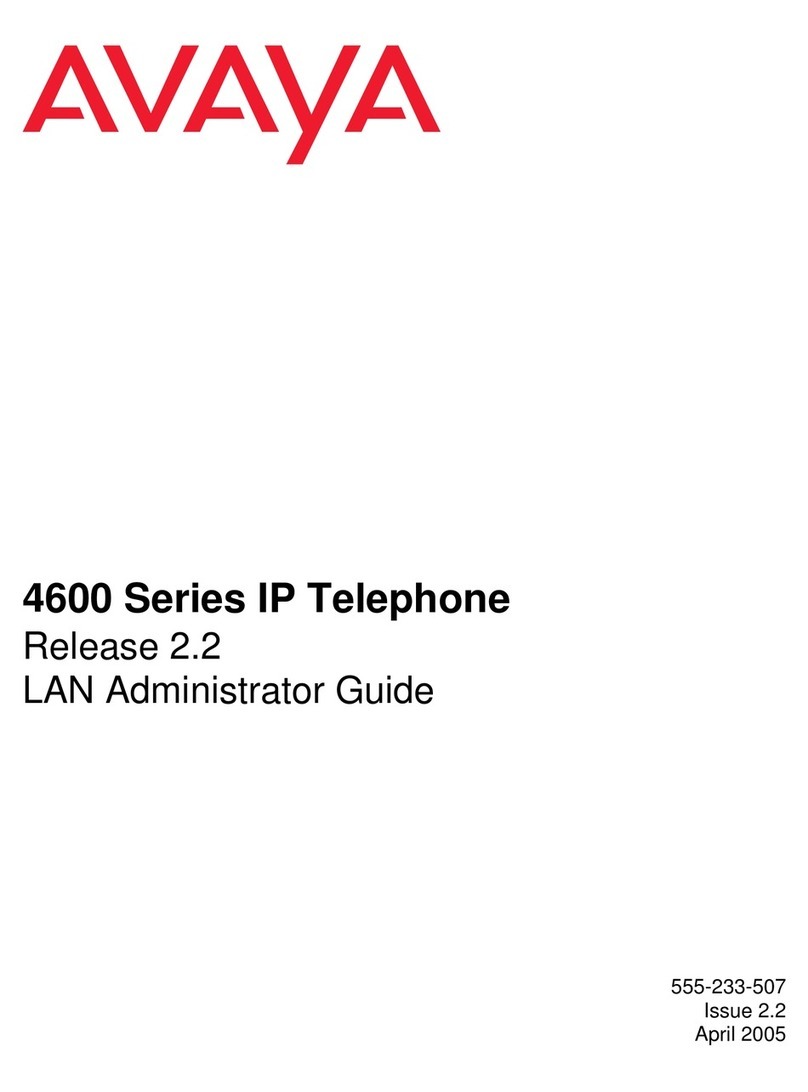Pub. 42004-546A
G A I - T R O N I C S ®
A H U B B E L L C O M P A N Y
Rugged Autodial Handset
VoIP Telephones
TA B L E O F CO N T E N T S
GAI-TRONICS 3030 KUTZTOWN RD. READING, PA 19605 USA
610-777-1374 ◼800-492-1212 ◼Fax: 610-796-5954
VISIT WWW.GAI-TRONICS.COM FOR PRODUCT LITERATURE AND MANUALS
Confidentiality Notice.....................................................................................................................1
Product Overview............................................................................................................................1
Features and Functions ..........................................................................................................................1
System Requirements and Limitations.................................................................................................1
VoIP Subscriber Tips .............................................................................................................................2
Operation.........................................................................................................................................2
Handset Receiver Volume Control........................................................................................................2
Place a Call..............................................................................................................................................3
Receive a Call ..........................................................................................................................................3
Installation ......................................................................................................................................3
General Information...............................................................................................................................3
Safety Guidelines..................................................................................................................................3
Security Hardware ................................................................................................................................4
Conduit Installation Details (Applicable to Models 247-710 and 257-710)........................................4
Models 210-712, 210-712BH, and 210-712BHAC.................................................................................5
Model 227-710.........................................................................................................................................7
Model 247-710.........................................................................................................................................9
Model 257-710.......................................................................................................................................11
Model 277-710.......................................................................................................................................13
Models 277-712BH and 277-712BHAC...............................................................................................15
Flush-mount Installation..................................................................................................................... 15
Surface-Mount Installation .................................................................................................................17
Field Wiring...........................................................................................................................................17
Recommended Cable ..........................................................................................................................17
Power ..................................................................................................................................................18
Network Cable....................................................................................................................................19
Auxiliary I/O.......................................................................................................................................19
USB port ................................................................................................................................................20
Programming ................................................................................................................................20
VoIP Telephone Setup..........................................................................................................................20
VoIP Telephone Initial Network Configuration ................................................................................20
